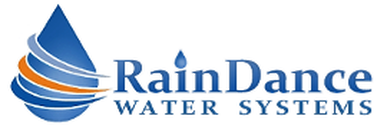Total Coliforms
What are Coliforms?
Coliforms are bacteria that are naturally present in the environment, as well as human and animal feces. They are used as an indicator that other, potentially harmful, bacteria may be present.
What are the Maximum Contaminant Levels (MCL) for Coliforms?
The United States Environmental Protection Agency sets a Maximum Contaminant Level (MCL) for contaminants in public drinking water. The MCL is the maximum concentration that is allowed for public water supplies. The United States Environmental Protection Agency states the maximum contaminant level for total coliforms allowed in drinking water is zero.
What are the potential health effects from exposure above the MCL?
Coliforms present in a water source may indicate the presence of fecal coliform, E. Coli, or others, which can cause short-term health effects, such as diarrhea, cramps, nausea, headaches, or other symptoms.
What treatment methods have been proven to be effective for removal or inactivation?
Disinfection with chlorine, ultraviolet light or ozone and/or filtration has been most effective for inactivating coliforms.
What solutions does RainDance Water Systems have to offer?
Check out our variety of disinfectant water treatment systems here:
What are Coliforms?
Coliforms are bacteria that are naturally present in the environment, as well as human and animal feces. They are used as an indicator that other, potentially harmful, bacteria may be present.
What are the Maximum Contaminant Levels (MCL) for Coliforms?
The United States Environmental Protection Agency sets a Maximum Contaminant Level (MCL) for contaminants in public drinking water. The MCL is the maximum concentration that is allowed for public water supplies. The United States Environmental Protection Agency states the maximum contaminant level for total coliforms allowed in drinking water is zero.
What are the potential health effects from exposure above the MCL?
Coliforms present in a water source may indicate the presence of fecal coliform, E. Coli, or others, which can cause short-term health effects, such as diarrhea, cramps, nausea, headaches, or other symptoms.
What treatment methods have been proven to be effective for removal or inactivation?
Disinfection with chlorine, ultraviolet light or ozone and/or filtration has been most effective for inactivating coliforms.
What solutions does RainDance Water Systems have to offer?
Check out our variety of disinfectant water treatment systems here:
Please note: The contaminant listed above is intended for research and informational purposes only. It is not intended to suggest that the listed contaminant is present in your water supply. Only testing by an accredited lab can identify the presence of contaminants in your water supply.


